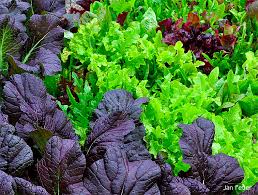Raindrops keep falling on our heads. Be glad you couldn't hear me sing that as I typed. This winter has been a wet one. Arbor Day is this month. Usually, I would be in spring mode, getting excited and ready to plant my yearly tree. However, my excitement is drowning. Then, I think, wait a minute, the ground is soft, and it's the perfect time to get a hole dug for my beautiful tree. EXCITEMENT has returned!!
It seems we only see the sunshine here about twice per week. People seem gloomy and maybe even grouchy. Take heed, it cannot last forever. All of this bad stuff will eventually be a memory.
Could you ever imagine all this rain having a positive side? Well, there is, and we really need to focus on that. First of all, it replenishes our water table below ground. The water table is critical for those of us who have wells, to keep them from going dry.
Trees! Think trees. When we are experiencing a particularly wet season, you must think of trees. We all know that holes for trees seem endless to the one digging. However, if it has rained a lot, those holes are much easier to dig. It also cuts down on time spent watering a new plant. Of course, you'll need to water when it dries out — if it ever dries out. Rain can be helpful. it's very hard to see it that way through the gloom.
So now may be the ultimate opportunity if you were planning on adding trees or shrubs to your landscape or home orchard. The ground is soft and we still have enough sunny days to get it done. Unless of course, you plan on waiting for the weekend. We haven't seen a dry weekend in quite some time here in NC, but we are so blessed it has not been snow.
March brings us ARBOR DAY. Arbor Day in North Carolina was designated as the first Friday following March 15. So, what better way to recognize that day than to plant a tree.
If you are curious about how and when Arbor Day got started, click the link and read more at https://mitchellsnursery.com/2022/01/20/arbor-day-2022/
Plant a tree and better our environment.








